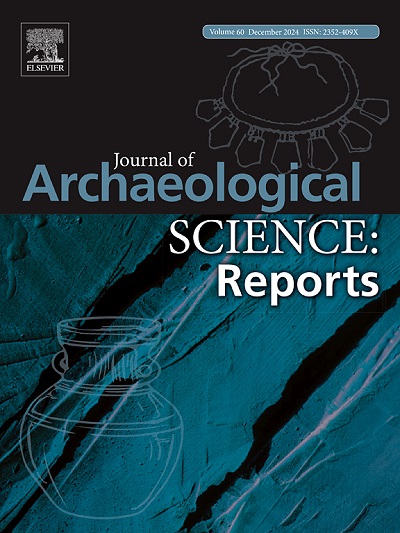红色的阴影:对阿根廷巴塔哥尼亚Chubut西南部Aldea Beleiro的Casa de Piedra de Roselló红色画作的首次化学分析
IF 1.5
2区 历史学
0 ARCHAEOLOGY
引用次数: 0
摘要
Aldea Beleiro (SW Chubut,阿根廷巴塔哥尼亚)的岩石艺术以使用红色色调的一致性而引人注目,特别是在多地点Casa de Piedra de Roselló的主题中。根据相对年代学,这些图案属于全新世的不同时期,呈现出惊人的色彩连续性,挑战了在漫长的人类职业序列(大约距今1万年)中颜料生产的变化和持久性之间的区别。为了解决这个问题,本研究采用了一种多分析方法-结合SEM-EDS,拉曼显微光谱和FTIR显微光谱-在化学水平上区分红色颜料。我们的研究结果表明,尽管颜色明显同质,但潜在的化学成分揭示了各种各样的油漆制备技术,即使是在类似年代的图案中。这种可变性突出了油漆生产过程的复杂性,并强调需要进一步研究,以更好地了解岩石艺术绘画中颜料管理的方法和选择。本文章由计算机程序翻译,如有差异,请以英文原文为准。
The shades of red: First chemical analysis of red paintings from Casa de Piedra de Roselló, Aldea Beleiro, SW Chubut, Argentine Patagonia
The rock art of Aldea Beleiro (SW Chubut, Argentine Patagonia) stands out for the remarkable consistency in the use of red shades, particularly in the motifs of the multi-site Casa de Piedra de Roselló. These motifs, attributed by relative chronology to different moments of the Holocene, present a striking chromatic continuity that challenges the distinction between change and persistence in paint production over a long human occupation sequence (ca. 10,000 years BP). To address this issue, this study employs a multi-analytical approach—combining SEM-EDS, Raman micro-spectroscopy, and FTIR micro-spectroscopy—to differentiate between red pigments at a chemical level. Our findings suggest that, despite the apparent homogeneity in color, the underlying chemical composition reveals a diverse range of paint preparation techniques, even within motifs of similar chronology. This variability highlights the complexity of paint production processes and underscores the need for further research to better understand the methods and choices involved in pigment management for rock art painting.
求助全文
通过发布文献求助,成功后即可免费获取论文全文。
去求助
来源期刊

Journal of Archaeological Science-Reports
ARCHAEOLOGY-
CiteScore
3.10
自引率
12.50%
发文量
405
期刊介绍:
Journal of Archaeological Science: Reports is aimed at archaeologists and scientists engaged with the application of scientific techniques and methodologies to all areas of archaeology. The journal focuses on the results of the application of scientific methods to archaeological problems and debates. It will provide a forum for reviews and scientific debate of issues in scientific archaeology and their impact in the wider subject. Journal of Archaeological Science: Reports will publish papers of excellent archaeological science, with regional or wider interest. This will include case studies, reviews and short papers where an established scientific technique sheds light on archaeological questions and debates.
 求助内容:
求助内容: 应助结果提醒方式:
应助结果提醒方式:


